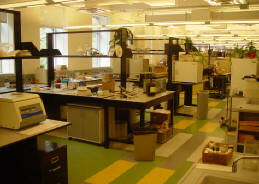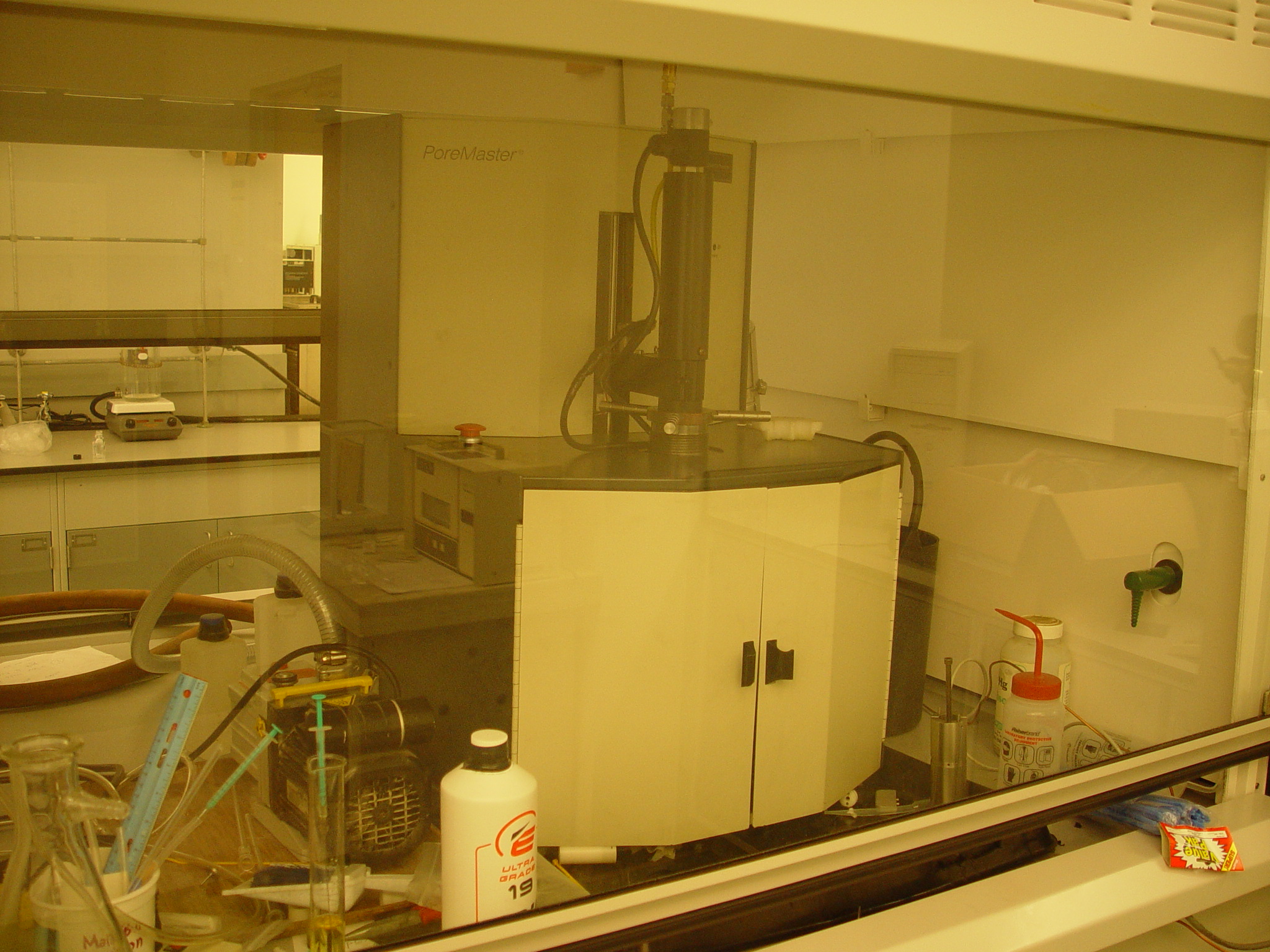|
Most of our research projects
involve synthesis of organic, bio-organic, or polymeric surfaces
supported on inorganic solids, e.g. nano-porous and colloidal silicas,
glass, Si wafers, quartz crystal, metals, metal oxides, and others.
We are making these materials in the wet chemistry lab, which is
equipped with fume hoods, glove boxes, gas and vacuum lines,
high-pressure and high-temperature reaction vessels, sonicators,
centrifuges, vacuum ovens, filtration, and other synthetic research
tools.
|
 |
|
High-pressure Intrusion Porosimeter (Poremaster,
Quantachrome) is used to study (i) wetting in porous materials, (ii)
characterization of solid-liquid interactions in pores, and (iii) pore
size distribution of porous materials.
|
 |